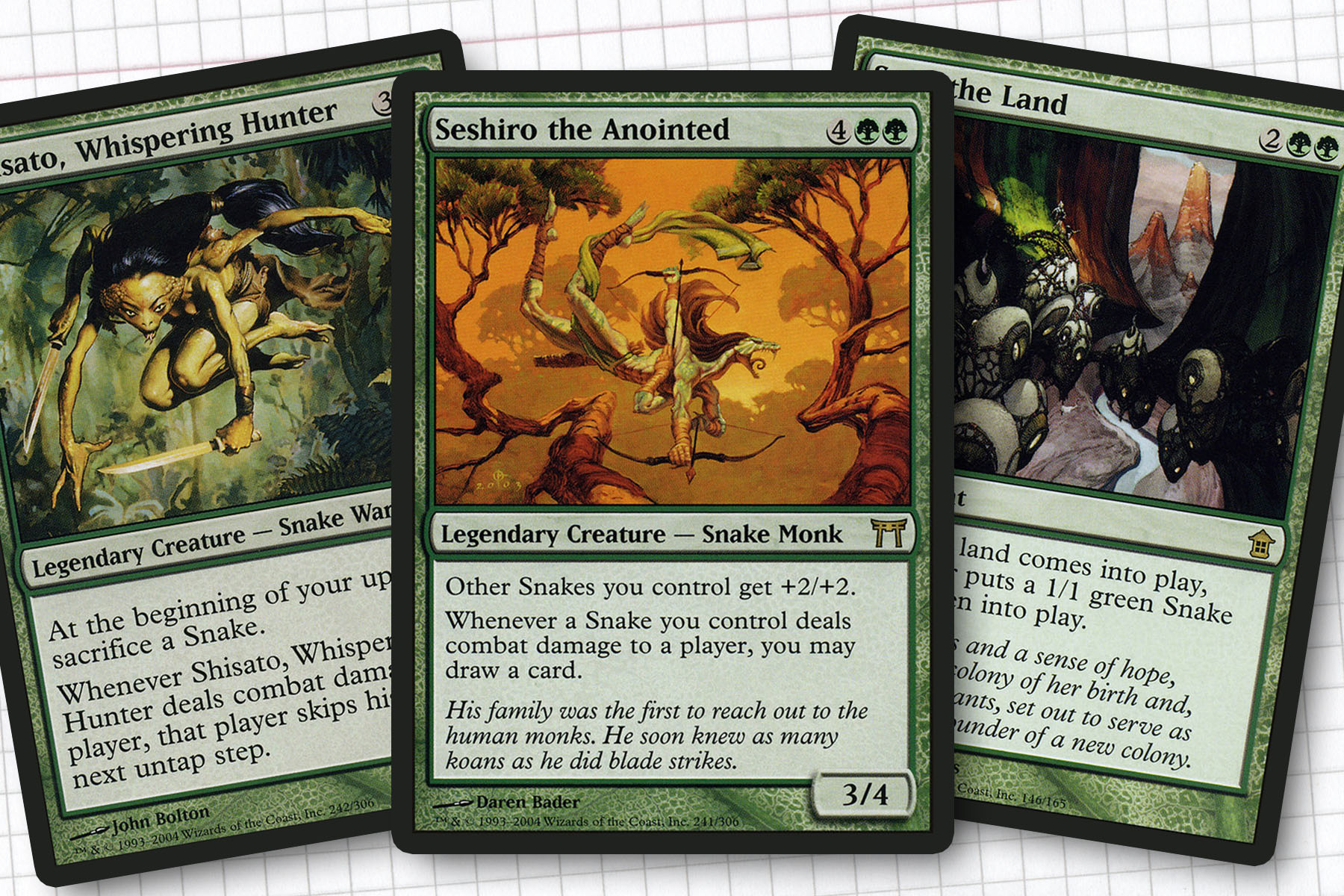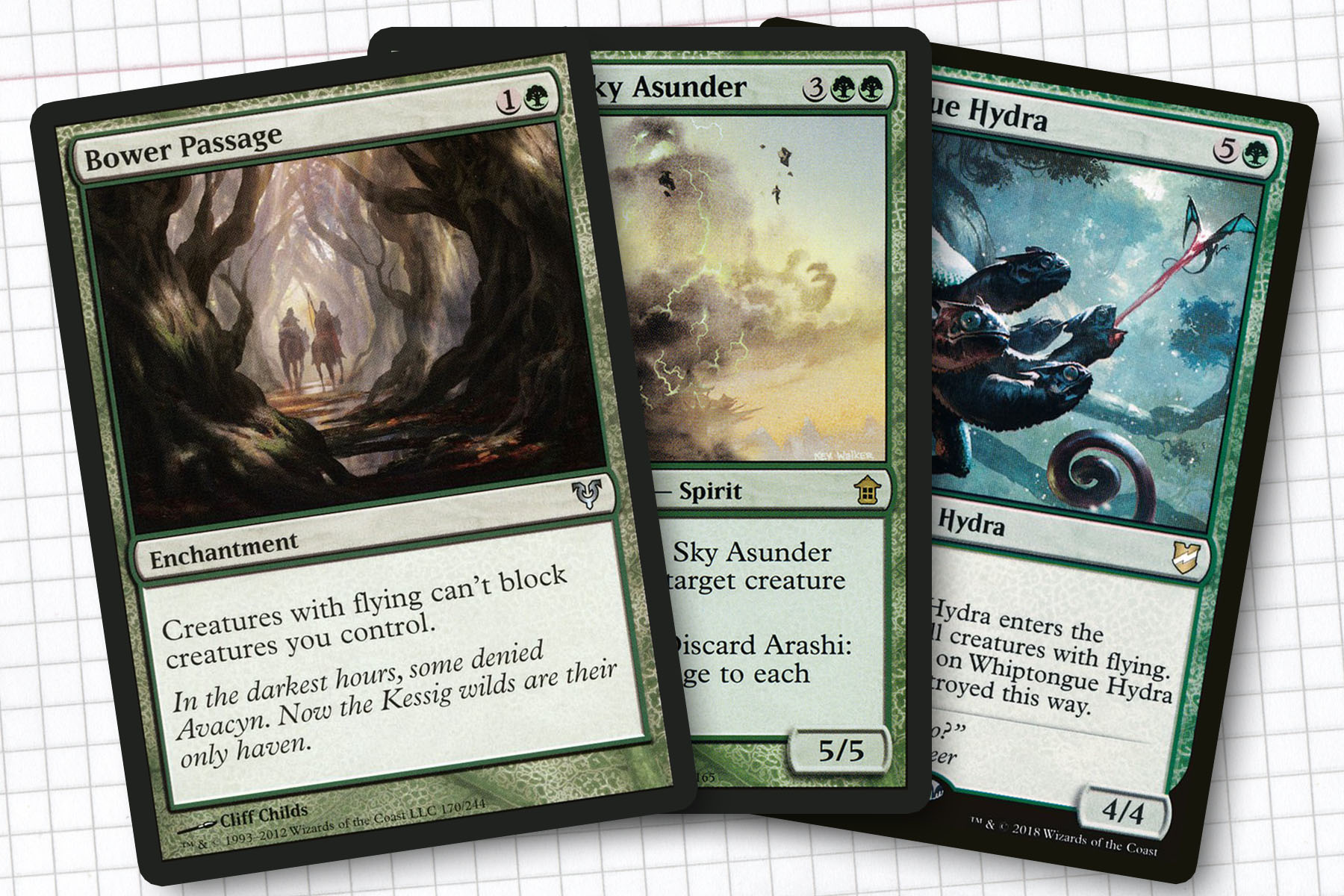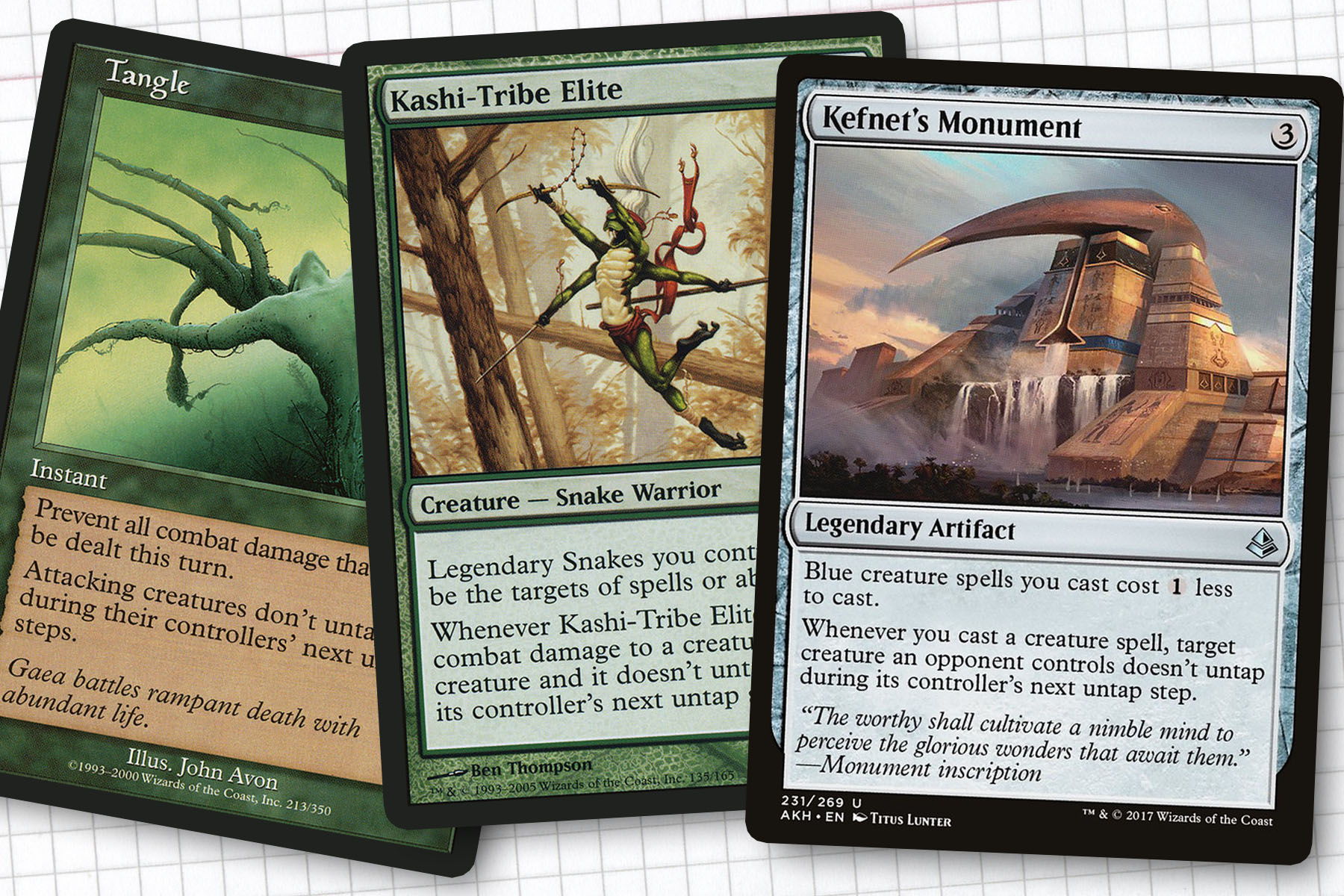As a long time fan of the Kamigawa block, I knew that in the lead up to Kamigawa Neon Dynasty I wanted to really put a spotlight on Kamigawa to investigate the full color wheel of legendary creatures inhabiting the plane. This is the third installment, following my look at Toshiro Umezawa and Fumiko the Lowblood in the previous weeks.
While I had considered returning to Isao, Enlightened Bushi after talking about the deck nearly five years ago, I realized during planning for this series that Kamigawa’s snakes were such a vast departure from what we normally expect from the tribe that they really deserved their own exploration. With legs and four arms, the snakes of Kamigawa are as visually iconic to me as slivers. Additionally, they have a theme that puts them in an area of color bleed and allows them to support a clever midrange style deck.
This week, we’re identifying our strengths and weaknesses to make the best of an unappreciated tribe. We will be putting Seshiro the Anointed at the helm, a top-of-the-curve general who does a fantastic job pumping up our other snakes and providing the card draw we will need by the time he enters play. This seemed like fertile ground for a fun deck that could be deceptive in its power level. Just my speed.
Commander: Seshiro the Anointed
Creatures: Adaptive Automaton, Arashi, the Sky Asunder, Birds of Paradise, Chameleon Colossus, Hexdrinker, Hooded Hydra, Kashi-Tribe Elite, Kashi-Tribe Reaver, Kashi-Tribe Warriors, Lotus Cobra, Matsu-Tribe Birdstalker, Matsu-Tribe Decoy, Matsu-Tribe Sniper, Nessian Asp, Ohran Frostfang, Old Gnawbone, Orochi Eggwatcher, Orochi Sustainer, Patron of the Orochi, Prowling Serpopard, Realmwalker, Sachi, Daughter of Seshiro, Sakiko, Mother of Summer, Sakura-Tribe Elder, Seedborn Muse, Shisato, Whispering Hunter, Sosuke, Son of Seshiro, Whiptongue Hydra
Artifacts: Coat of Arms, Door of Destinies, Eldrazi Monument, Herald’s Horn, Kefnet’s Monument, Obelisk of Urd, Pillar of Origins, Snake Basket, Vanquisher’s Banner
Enchantments: Alpha Authority, Bower Passage, Canopy Cover, Dense Canopy, Heartbeat of Spring, Lifegift, Nature’s Will, Seed the Land, Snake Pit, Spidersilk Armor, Wilderness Reclamation
Instants: Return of the Wildspeaker, Snag, Spore Cloud, Tangle, Vitalize
Sorceries: Creeping Renaissance, Hurricane, Kodama’s Reach, Mobilize, Skyreaping, Sosuke’s Summons, Traverse the Outlands
Lands: 27 Forest, Animal Sanctuary, Blighted Woodland, Cavern of Souls, Field of Ruin, Ghost Quarter, Mutavault, Myriad Landscape, Nykthos, Shrine to Nyx, Oran-Rief, the Vastwood, Path of Ancestry, Unclaimed Territory, War Room

A Tribe of Utility
When constructing this deck, it felt important to realistically look at the strengths and weaknesses of snakes as a tribe. While I wanted to lean into cards coming out of Kamigawa block, snakes have filled so much Magic history that I knew I could easily fill in the gaps of our deck skeleton. Snakes have at least a few sizable themes and access to a healthy amount of token generation. But historically, they do not have the resume that should make them threatening to a table, and I knew that was something to exploit.
After putting together this list, I was a little surprised how many snakes were roleplayers for the deck. Sachi, Daughter of Seshiro and Sosuke, Son of Seshiro as a pair offer lord effects that also enhance some of our creatures based on their class. In the case of Sachi, we should be able to guarantee that our general can come out the very next turn, even if she is the only shaman we have. And with Sosuke, our warriors will act as removal with a dated form of deathtouch. Of course this is similar to celebrating that Grave Titan has deathtouch—I’d hope that our creatures will be big enough to have won combat anyway.
To help facilitate Shisato, Whispering Hunter, I knew that we would need to take advantage of repeatable token creation, of which snakes have a reasonable amount. Seed the Land, Snake Pit, and Sosuke’s Summons should provide enough tokens that Shisato can devastate a player’s tempo while also providing chump blockers. And we can fall back on Snake Basket if we need a rush of snakes. Shisato is representative of one of the larger themes of the deck, which I will go into later. But constructing this deck made me want to find an entire deck for them to helm one day as well.

Dropping Out of the Sky
Green is not known for its deep access to flying creatures. As an intentional choice, outside of Birds of Paradise and Old Gnawbone, this deck was crafted to not have flying creatures. This means that we can aggressively fight against them in a few different ways. Two of the cards that combat fliers in a creative way are Bower Passage and Dense Canopy, taking the inherent advantage flying creatures have in the typical game and making it a setback. This doesn’t allow us to simply go around alpha striking whomever we like, but it changes the combat math in ways that can simplify our thinking and complicate the thinking of our opponents.
The other big category of flying management is raw creature destruction through damage. Arashi, the Sky Asunder, Hurricane, and Skyreaping were the three spells that I deemed best for answering flying threats in this manner. I’ve really grown to appreciate Arashi in decks like this, because they can act as a repeatable mana sink if we need to answer only a few threats over the entire game or can be Windstorm if the situation requires it. The spot filled by Hurricane was originally Corrosive Gale, but the added ability to be player removal felt like a solid addition to the deck.
Finally, we have Whiptongue Hydra, a creature that due to its heavy mana cost, doesn’t see the amount of play it should. Six mana is certainly an investment, but the threats it’s meant to counteract are not early game plays either. Divine Visitation isn’t impacting the game until around turn six. Utvara Hellkite is more than likely being cheated out, but its impact may not be felt until just around the time that Whiptongue Hydra can come down and wipe out the skies.

Disrupting the Natural Order
It would be silly to assume that all of our opposing combat will revolve strictly around fliers. So I fell back on a reliable tactic I have a lot of experience with: tapping down creatures. The threat of having a creature tapped down for an extended period can be potent because it takes away an option we would normally rely on. It’s a rogue strategy and those tend to thrive against unsuspecting opponents, who are not equipped with the answers to our threats.
In most iterations of the tap down strategy, I play a much more aggressive, removal-based game. Assassinate, Sunblast Angel, etc. For this deck, our opponents will be denied resources and we will gain the advantage of untapping resources more often through cards like Nature’s Will, Patron of the Orochi, and Seedborn Muse. This should, in theory, level the playing field a bit.
Oddly enough, the snakes of Kamigawa were pretty good at neutralizing threats, the wide swath of Kashi-Tribe Elite, Kashi-Tribe Reaver, Kashi-Tribe Warriors, Matsu-Tribe Birdstalker, Matsu-Tribe Decoy, and Matsu-Tribe Sniper all took combat damage and added a free copy of Take into Custody to the equation. If we can take the tribal elements discussed previously and keep our wits about us as we attack and block, we can create scenarios where the biggest threats across the table are encumbered long enough for us to apply some player removal.
Additionally, Fog effects are criminally underrepresented in a lot of Commander games. This is another area where I fell back on cards that shaped my early Magic career: Spore Cloud and Tangle. Back in 2002, when I had no idea that Gatherer existed, these were the cards that populated the box of singles on the counter of my local comic book store. I could not research the observable universe of cards in the game and I thought this was how combat damage prevention spells worked. If someone bluffed you well enough, you were sitting combat out next time. I want to bring that same strategy to games today.
Closing Thoughts
I believe that with this saturation of unconventional tools, we can catch our opponents off guard while we simplify our thinking and complicate the thinking of our opponents. Snakes are not a threatening tribe, flying creatures are not usually actively combatted, and creatures generally untap every turn. Separately, these three themes would not make for good individual decks. But once you take a bad tribe, identify its weaknesses, and actively try to remove those options from our opponents, I believe you have a fighting chance in a game of Commander. That said, I really hope Wizards has chosen to revisit the snakes of Kamigawa, because I would love to upgrade some of their tools and really get this machine humming.
Next week, we will be exploring a white legendary creature from Kamigawa. And I am pretty excited because I have had this one solidified as an idea since drawing up plans for this series. I am beyond excited for our return to Kamigawa, and hopefully this series is drawing in people who don’t know the quirky nature of the plane and making them even a little bit excited as well. See you next time, thanks for reading.
Ryan Sainio is a Graphic Designer who writes about EDH and the EDH community. He has been playing Magic: the Gathering since 7th Edition in 2002 and values flavorful and fun gameplay over competitively optimized decks.

